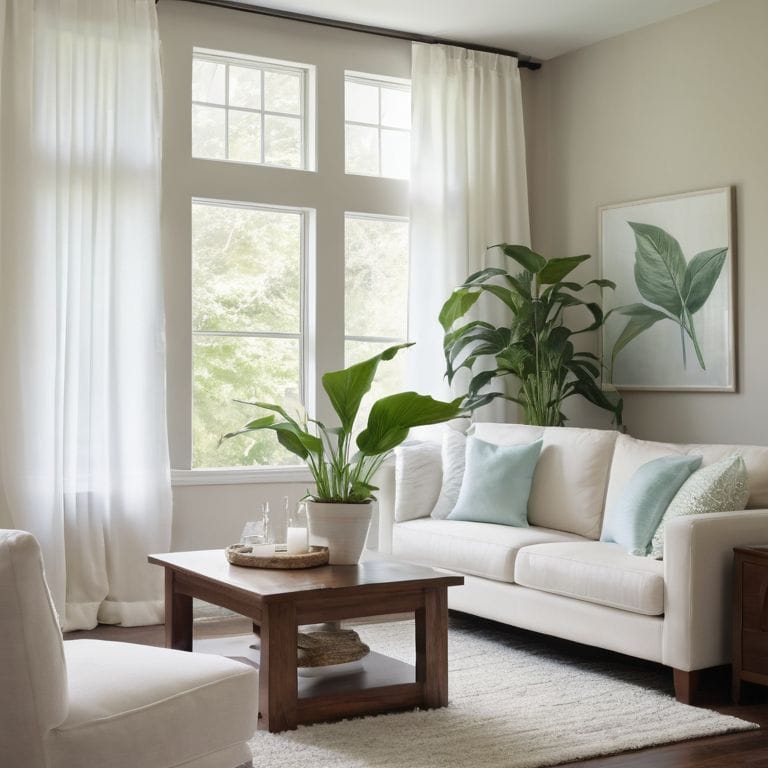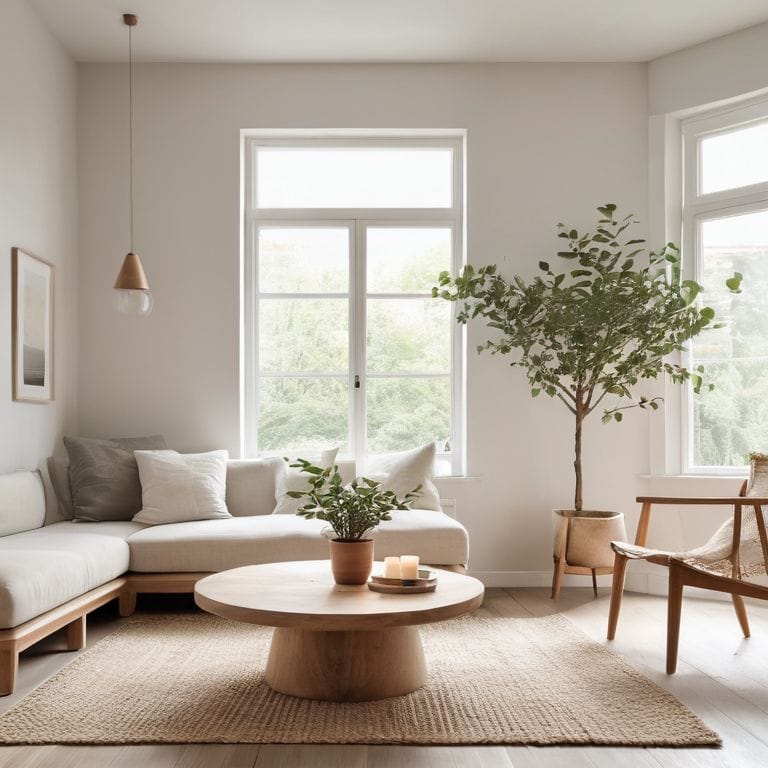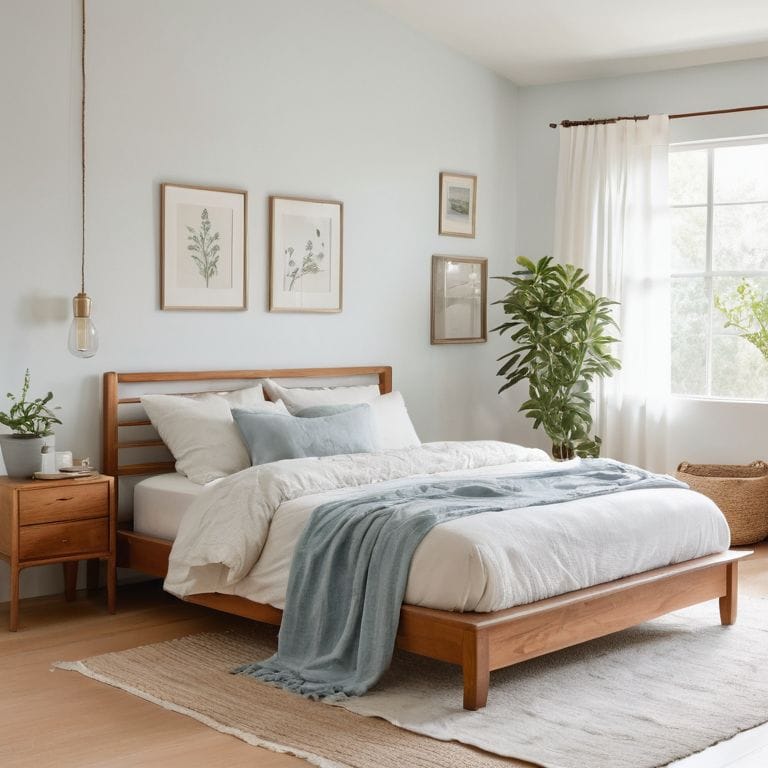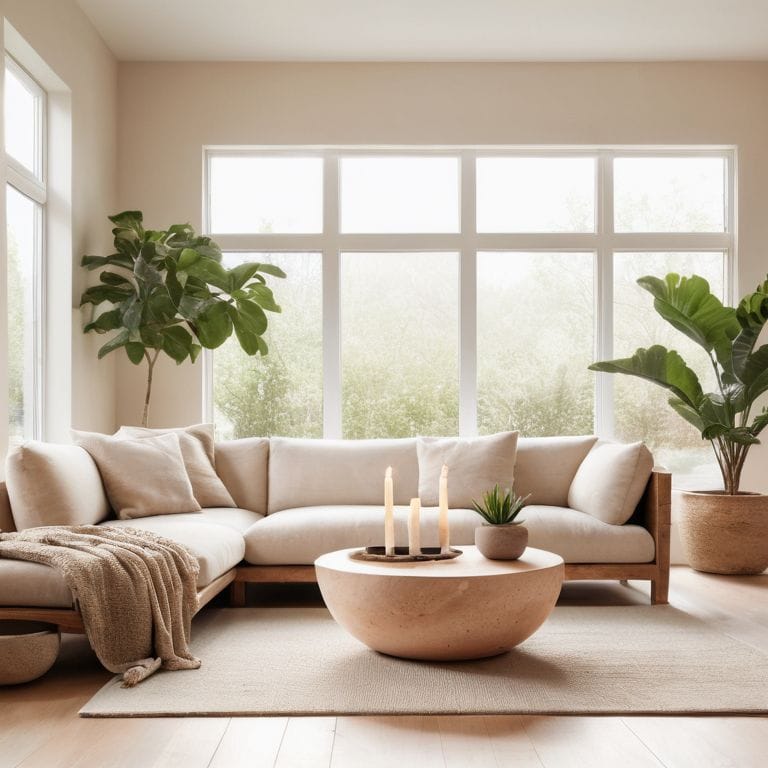I still remember the day I realized that my cluttered desk was a reflection of my cluttered mind. As someone who’s passionate about how to use feng shui for a calmer home, I’ve learned that it’s not just about rearranging furniture, but about creating a space that nurtures our well-being. The common myth that feng shui is only about placing objects in specific spots to attract wealth or fortune is far from the truth. In reality, it’s about _harmonizing_ our living spaces to promote balance and tranquility.
As we explore the world of feng shui, I want to assure you that this article will provide practical and honest advice on how to create a calmer home. We’ll dive into simple, yet effective techniques to help you _transform your space_ and, in turn, your mind. From understanding the basics of feng shui to implementing mindful changes in your daily life, I’ll share my expertise as a professional organizer to help you achieve a more serene and peaceful living environment. By the end of this article, you’ll be equipped with the knowledge to turn your home into a true sanctuary, where you can unwind and recharge.
Table of Contents
Guide Overview: What You'll Need

Total Time: 1 hour 30 minutes
Estimated Cost: $20 – $50
Difficulty Level: Easy
Tools Required
- Compass (for determining directions)
- Tape Measure (for measuring rooms and furniture)
- Pencil and Paper (for mapping out your space)
Supplies & Materials
- Plants (for air purification and decoration)
- Essential Oils (for calming scents)
- Candles (for soft lighting)
- Minimal Decor (to reduce clutter and promote relaxation)
Step-by-Step Instructions
- 1. First, let’s start by understanding the core principles of feng shui, which is an ancient Chinese philosophy that seeks to balance and harmonize the energies in a given space. To apply feng shui in your home, you need to begin by assessing your current space, taking note of the layout, the position of doors and windows, and the overall flow of energy.
- 2. Next, you’ll want to declutter and minimize your belongings, as clutter can disrupt the flow of energy and make your space feel chaotic. This is where my principle of “every object having a purpose or a place” comes into play. Go through each room and remove anything that doesn’t serve a functional or aesthetic purpose, and find a designated spot for the items you decide to keep.
- 3. Now, let’s talk about the bagua map, which is a fundamental tool in feng shui used to map the energy of your space. The bagua map is superimposed over the floor plan of your home, dividing it into nine areas, each corresponding to a different aspect of your life, such as relationships, career, and wealth. By understanding which areas of your home correspond to which areas of your life, you can make intentional decisions about the objects and colors you place in each space.
- 4. To create a calming atmosphere, it’s essential to consider the color palette of your home. In feng shui, different colors are associated with different energies and emotions. For example, soothing colors like blue and green can promote relaxation and calmness, while vibrant colors like red and orange can stimulate energy and activity. Choose a color scheme that reflects the mood you want to create in each room.
- 5. Lighting is another crucial element in feng shui, as it can greatly impact the mood and ambiance of a space. Consider using table lamps or floor lamps to create warm and inviting pools of light, and avoid harsh overhead lighting, which can create a sense of tension. You can also use candles or string lights to add a touch of warmth and coziness to your space.
- 6. The placement of furniture is also vital in feng shui, as it can affect the flow of energy in your home. Avoid placing furniture in a way that creates narrow pathways or bottlenecks, as this can disrupt the flow of energy and make your space feel cramped. Instead, opt for a more open and airy layout, with plenty of space to move around and relax.
- 7. Finally, don’t forget to bring in some natural elements, such as plants, wood, or stone, to create a sense of balance and harmony in your space. These elements can help to ground and calm the energy in your home, promoting a sense of relaxation and well-being. By incorporating these natural elements, you can create a space that feels like a true sanctuary, a place where you can unwind and recharge after a long day.
Feng Shui for a Calmer Home

As I often tell my clients, creating a peaceful atmosphere is just as important as the physical act of organizing. This is where feng shui for beginners at home comes into play. By applying simple principles, such as balancing elements and minimizing clutter, we can start to feel a sense of calm wash over us. I’ve seen it time and time again – when we clear out the physical clutter, we also start to clear out the mental clutter.
One of the easiest ways to start implementing feng shui in your daily life is by incorporating calming color schemes for bedrooms. Softer colors like light blue or pale green can help create a sense of serenity, making it easier to unwind after a long day. I also recommend using plants for air purification and feng shui, as they not only help to purify the air but also add a touch of natural beauty to a room.
In my own home, I’ve found that simple feng shui exercises for daily practice can make a huge difference in my overall sense of well-being. Taking just a few minutes each day to focus on my breath and visualize a peaceful space can help to calm my mind and set a positive tone for the day. By incorporating these small practices into your daily routine, you can start to create a more peaceful home office with feng shui, and ultimately, a more peaceful life.
Calming Colors for Bedrooms
When it comes to creating a serene atmosphere in the bedroom, colors play a significant role. Soothing hues such as light blues, pale greens, and soft grays can calm the mind and promote relaxation. These colors can be incorporated into the bedroom through wall paint, bedding, or curtains. By surrounding yourself with these calming colors, you can unwind and prepare for a restful night’s sleep.
I recommend avoiding bold or bright colors in the bedroom, as they can stimulate the mind and make it difficult to fall asleep. Instead, opt for a muted color palette that promotes tranquility and peace. Remember, the goal is to create a sanctuary that nurtures your mind and body, and the right colors can help you achieve that.
Minimizing Clutter for Energy
To create a harmonious flow of energy, it’s essential to minimize clutter in our living spaces. Clutter can weigh heavily on our minds, making it difficult to relax and unwind. I always tell my clients to “interview” their belongings, asking themselves if each item serves a purpose or brings joy. By letting go of unnecessary items, we can create a sense of calm and clarity.
This simple yet powerful practice allows us to focus on what truly matters, creating a peaceful environment that nurtures both body and mind. By doing so, we can transform our homes into sanctuaries that promote serenity and well-being.
5 Serene Strategies to Bring Feng Shui into Your Home
- Apply the Principle of Balance: Ensure that each room has a balance of elements, such as wood, fire, earth, metal, and water, to create a harmonious environment
- Commanding Position for Peace: Place your furniture in a commanding position, which means positioning it in a way that you have a clear view of the door, but not directly in line with it, to reduce stress and increase feelings of safety
- Mindful Lighting for Tranquility: Use lighting to create a peaceful ambiance, considering the color temperature and intensity of light bulbs, and incorporating natural light whenever possible to boost mood and energy
- Nature Inside for Calm: Bring the outdoors in by adding plants, a water feature, or a natural element, like a stone or wooden decor, to create a sense of calm and connection to nature
- Slow Down with Intentional Decor: Choose decor and furniture that promotes relaxation and slows down your pace, such as a cozy reading nook or a peaceful artwork, to help you unwind and recharge
Key Takeaways for a More Serene Living Space
By applying simple feng shui principles, such as balancing yin and yang elements and incorporating natural materials, you can significantly reduce stress and anxiety in your home
Calming colors and minimal clutter are crucial for maintaining a peaceful atmosphere, especially in bedrooms where rest and relaxation are paramount
Creating a harmonious living space is not just about aesthetics; it’s about cultivating a deeper sense of well-being and tranquility that permeates every aspect of your life, from work to personal relationships
Embracing Serenity
As we intentionally design our living spaces with feng shui principles, we’re not just rearranging furniture – we’re crafting a sanctuary that nurtures our souls and calms our minds, reminding us that peace is not something we find, but something we create, one deliberate choice at a time.
Nathan Reed
Embracing the Calm

As we’ve explored the world of feng shui for a calmer home, it’s clear that creating a peaceful sanctuary is within reach. We’ve discussed the importance of _calming colors_ in bedrooms, and the impact of _minimizing clutter_ on our energy. By applying these simple yet powerful principles, you can transform your living space into a haven that nurtures both body and mind. Remember, it’s all about finding a balance that works for you, and being intentional about the energy you want to cultivate in your home.
As you embark on this journey to a calmer home, I encourage you to be patient and _kind to yourself_. Creating a space that truly feels like a sanctuary is a process, and it’s okay to take it one step at a time. By embracing the principles of feng shui, you’re not only transforming your physical space, but also investing in your own well-being. So take a deep breath, and let the calm begin to unfold – you deserve to come home to a sense of peace and serenity every day.
Frequently Asked Questions
How can I apply feng shui principles to a small or oddly shaped room?
For small or oddly shaped rooms, I recommend using mirrors strategically to create the illusion of more space and applying the ‘commanding position’ principle to furniture placement, which means positioning pieces in a way that you have a clear view of the door, but not directly in line with it.
What are some common feng shui mistakes to avoid when trying to create a calmer home?
When creating a calmer home with feng shui, it’s essential to avoid common mistakes like over-accessorizing or neglecting the command position. Also, beware of mismatched energy levels in different areas, like placing a high-energy decor in a bedroom, and forget about using feng shui as a quick fix – it’s about balance and harmony.
Can feng shui be used in conjunction with other decorating styles or is it a standalone approach?
I like to think of feng shui as a complementary tool, not a replacement for your personal style. You can definitely blend its principles with other decorating approaches, like modern minimalism or cozy rustic, to create a space that’s both beautiful and balanced.
